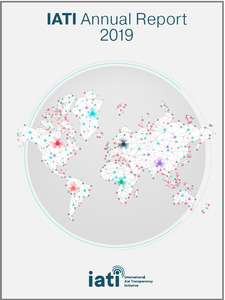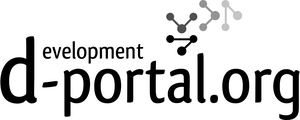Annual Report 2019: Laying the foundation for IATI’s future

Today, IATI’s Annual Report 2019 is launched to set out the achievements and challenges of the initiative over the past year. 2019 marked the start of IATI’s second decade, and over the course of the year IATI set the foundation for a bold future, one in which we capitalise on our strengths, address our weaknesses, and maximise our contribution to achieving sustainable development outcomes.
Download IATI Annual Report 2019 (ES, FR)
Driving IATI’s future direction
The Annual Report 2019 provides details on key work delivered last year to set the long-term aims and direction for IATI.
- Strategic Plan - The IATI Strategic Plan EN, ES, FR (2020–2025) was launched to guide the future direction of the initiative, setting three priorities for increasing the quality and use of IATI data, and improving the IATI Standard. More than 200 participants from 96 countries joined the consultation process to inform the Strategic Plan.
- IATI’s role in the 2030 Agenda for Sustainable Development - IATI continued to promote the essential role of open data in monitoring the Sustainable Development Goals (SDGs). IATI released new guidance to support organisations publish IATI data on how they are contributing to the SDGs. Major donors including the United Nations Development Programme, the World Food Programme and Oxfam Novib, have already started using the guidance to report their SDG data.
- Tech fit for the future - Over the last year, tremendous progress was made on upgrading and streamlining IATI’s complex suite of technical tools. Two new tools were launched for public testing ahead of planned roll-out in 2020: the new IATI Datastore and the IATI Validator. Both are vital in supporting IATI’s continuous efforts towards improving the quality and use of IATI data.
Key findings: IATI data in 2019
1000 IATI publishers
The number of organisations that have published data on their spending using the IATI Standard reached and exceeded 1000. Publishers include governments, multilaterals, NGOs, foundations, and private sector and development finance institutions. This milestone signalled the wide acceptance of the IATI Standard by the international development and humanitarian sector since its launch in 2011.

Data quality
The quality of data published was analysed in three key components:
- Timeliness (up-to-date information): The timeliness of data remained high in 2019 with 96% of spending reported by publishers who update their data at least every quarter. There was also a promising 34% increase in the number of publishers updating their data monthly, compared to 2018.
- Comprehensiveness (detailed information): There were only slight improvements in the number of fields in which publishers provided data, with less than half of publishers providing data in the key value-added fields of the IATI Standard. Organisations are strongly encouraged to increase the amount of data they publish in these fields, as they include vital information such as the locations and the results of development and humanitarian aid.
- Forward-looking data: There was a 32% increase from 2018 in the volume of forward-looking budget data published one year in advance (from US$99 billion to US$131 billion). This marked a significant expansion in the availability of data for planning and coordinating development resources.

Availability and use of IATI data
There was a 53% increase from 2018 in the number of new users accessing IATI data through the search tool d-portal. In terms of IATI’s partner country (government) members, the report found that all of IATI’s 31 can now find IATI data from at least 7 out of 10 of their largest donors. This compares to 26 out of 31 partner country members in 2018, an increase of 19%.
However, the report also highlights the need for IATI to address unmet development finance data needs at the country level, with a particular focus on data that is not typically tracked in governments' Aid Information Management Systems and/or available at the country level (e.g. for nonresident development finance providers).
Looking ahead
IATI is working to establish the foundations necessary to deliver the goals of the Strategic Plan (2020–2025). In 2019, IATI’s Secretariat and Governing Board worked collaboratively with IATI members to produce a robust framework to track progress on implementation of the Strategic Plan.
The new IATI Strategic Plan (2020–2025) monitoring framework will be used to inform the analysis of the initiative’s work in next year’s Annual Report.